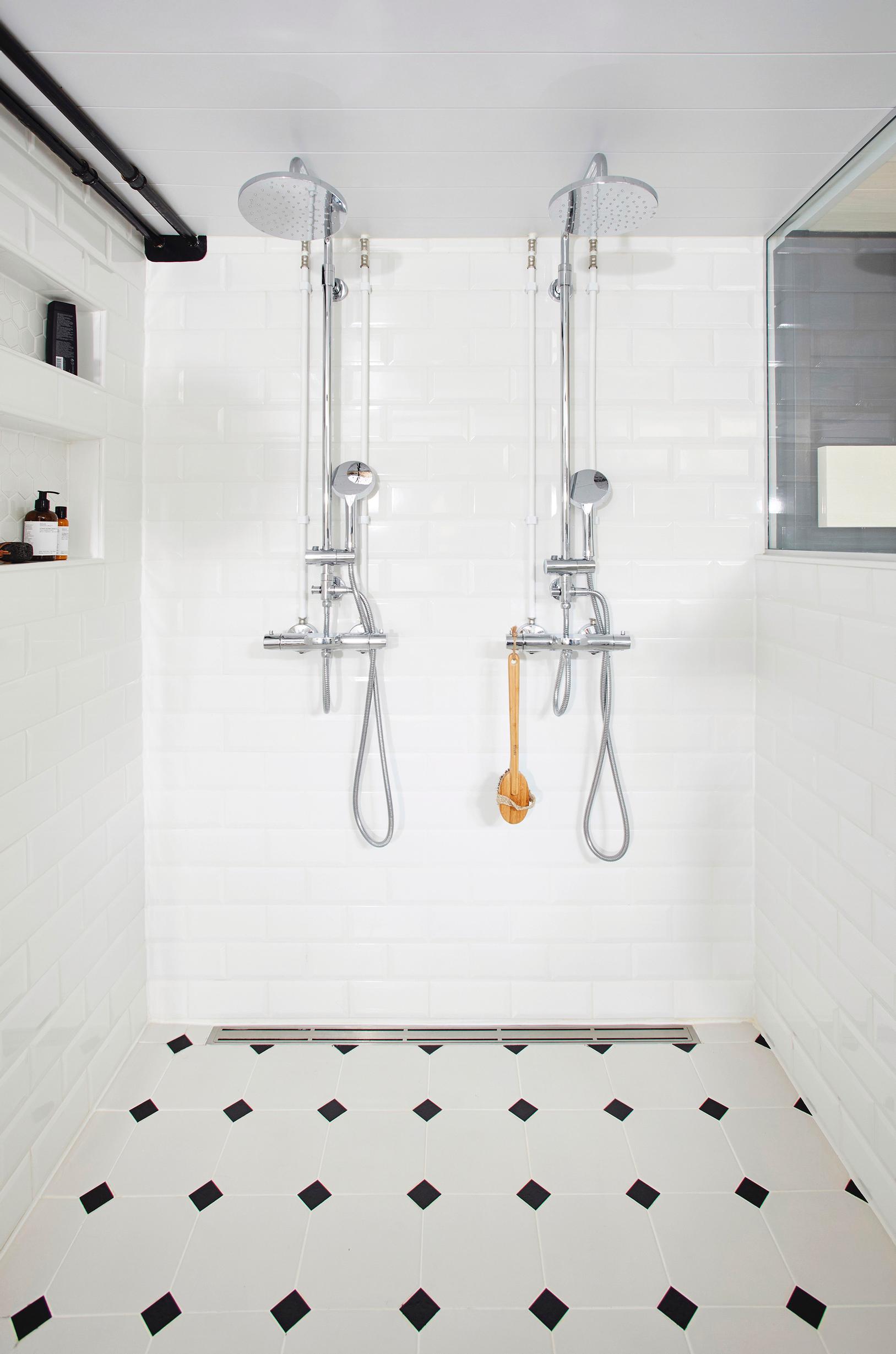
Cleaning tiles—expert tips to easily remove stubborn stains!
Struggling to get your kitchen tiles clean? And what about that stubbornly stained bathroom tile floor? Discover our expert top tips for cleaning tiles.
Regular cleaning prevents tile surfaces from staining and accumulating dirt, making maintenance easier. Kitchen tiles mainly collect grease and protein residues, while bathroom tiles accumulate skin oils and soap scum.
Choosing the right cleaning agents
Removing limescale and other deposits requires different products and tools than tackling grease stains. The packaging labels and usage instructions of cleaning agents and tools indicate their intended use. Always follow the dosage instructions, as overly strong cleaning solutions can damage surfaces. If the pH value of a product is over 7, it is alkaline and works best on greasy dirt. If the pH value is below 7, the product is acidic and removes, for example, lime deposits.
For regular maintenance, clean tiles with a neutral dishwashing detergent or all-purpose cleaner. Remove stubborn dirt with an alkaline cleaner (pH 10.1–14) or mildly alkaline cleaner (pH 8.1–10), preparing a cleaning solution according to the instructions.
The right tools
Use a scrubbing brush or pad as your tool. For cleaning grout, you can use a narrow grout brush, and if the grout is light-colored, a chlorine-based cleaner is ideal. A microfiber cloth works well for cleaning kitchen tiles. First, wet the tiles with warm water, which protects the grout from the cleaning solution and softens the dirt. If the cleaning agent contains chlorine, use cool water instead.
Here’s how to clean tiles
- Begin washing the tile wall from the bottom, moving upwards as you scrub. This way, dirty water won’t leave streaks on the cleaned areas.
- If necessary, let the cleaning solution sit for the time specified in the instructions, but ensure the surface does not dry out.
- Rinse the cleaned surface thoroughly and dry it with a window squeegee.
- You can treat the grout lines with a grout sealer to help them stay cleaner in the future. After the treatment, let the space dry out thoroughly.
Accumulation of dirt on grout and tiles
Dirt accumulates gradually, appearing as discolorations and roughness on tile surfaces and grout. Typical areas for accumulation are areas around showers, floor drains, sinks, toilets, and faucets. Causes may include insufficient cleaning, hard or rusty water, or leaking plumbing fixtures.
To remove these stains, use a strongly acidic cleaner (pH 0–1.9) or an acidic cleaner (pH 2–4.9) to prepare a solution, and apply it over the affected area.
Allow the solution time to work, then scrub the surface with a scrubber or brush. Finally, rinse the surface and neutralize with a mildly alkaline agent. You can prevent the formation of these deposits by occasionally using a mildly acidic cleaner. On very stubborn surfaces, there may be grease stains on top of deposits underneath. In this case, clean the surface first with an alkaline cleaner, then with an acidic cleaner. Use specialized products if necessary.
Cleaning silicone joints
Sanitary silicones and grout are often made to be mold-resistant, but they can still develop dark mold spots if there’s enough dirt or if the space has poor ventilation or other structural problems. Clean silicone joints gently with a soft sponge or microfiber cloth and a chlorine-based cleaner, which removes mold and kills mold spores.
Pro tip!
For an eco-friendly grout cleaner, try sour milk. Using a steam cleaner harnesses the power of hot steam. Vinegar, a lemon half dipped in salt, and citric acid are also effective for removing lime deposits.
Expert: Tarja Marjomaa


